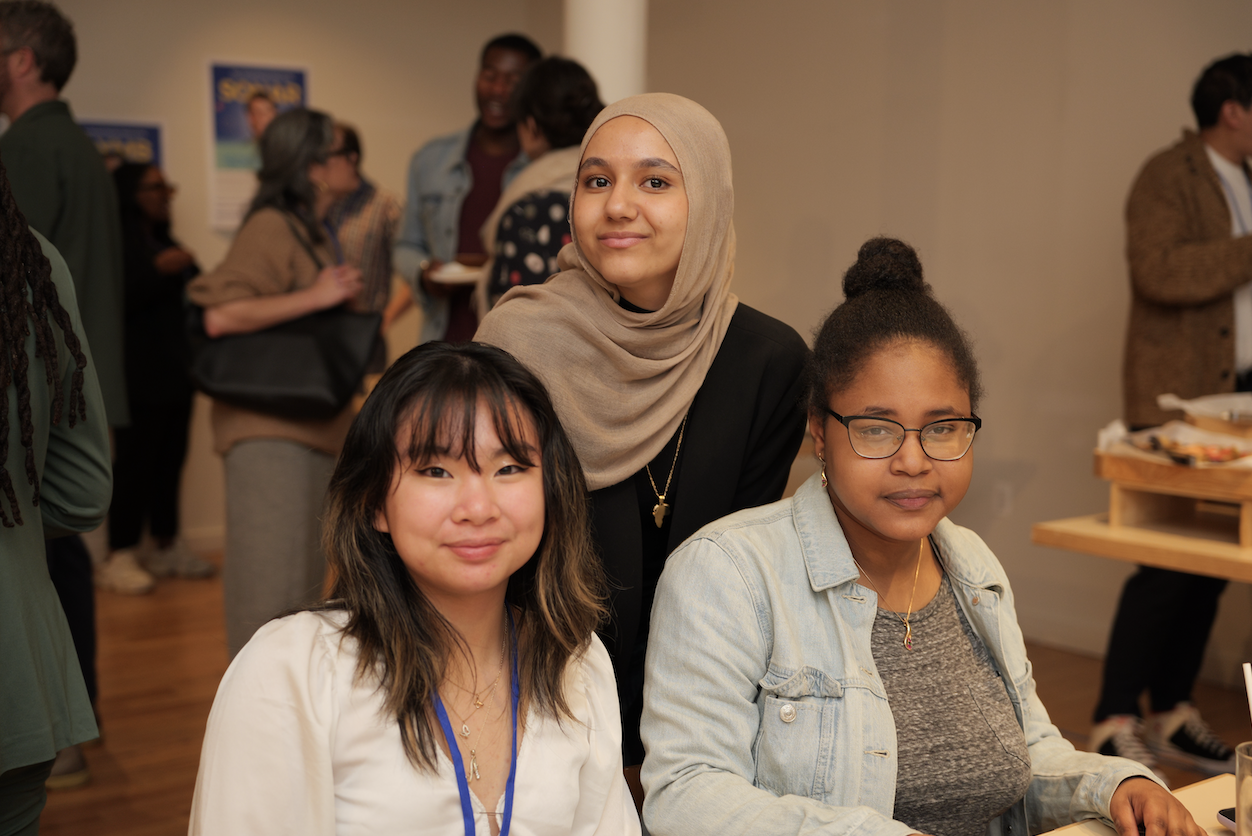This article was developed in collaboration with PsyMed Ventures and written by two of Headstream's Youth Co-Creators, Tanvi Kale and Cynthia Arenas.
Beyond Building "For" Youth: The Case for Co-Creation in Mental Health Innovation
The youth mental health crisis has triggered a global wave of innovation. Digital therapy platforms, AI-powered diagnostics, novel therapeutics, and brain-based devices are entering the market at unprecedented speed, fueled by venture capital and driven by urgent need. Yet too often, the voices of the very people these tools are meant to serve are missing from the development process. If we want innovation that truly works for young people, we need to stop building for them and start building with them.
Youth co-creation isn't just an ethical imperative, it's a competitive advantage. When decisions are made outside of youth engagement, we risk creating solutions to miss the mark entirely. Today's teens and young adults are digital natives who've grown up on TikTok, Discord, and AI chatbots. They can spot forced "mental wellness" content in a heartbeat and will uninstall anything that feels inauthentic or irrelevant.
Redefining Youth Engagement: From Consultation to Collaboration
The difference between traditional youth consultation and true co-creation is profound. As Cynthia, a youth co-creator at Headstream, explains: "I envision youth co-creation as a process where young people are not just involved, but are actively embedded in every stage of building a product, from scratch and design to launch and outreach. We're not just users or focus group participants. We're collaborators, creatives, strategists, and storytellers."
This shift from subject to scientist, from feedback provider to co-designer, transforms both the process and the outcomes. Tanvi, another youth collaborator at Headstream, emphasizes that "youth co-creation in mental health technology needs to start right at the beginning, not after the ideas are already formed. Too often, young people are only brought in to give feedback on something that's already built."
Co-Creation Across Innovation Categories
Across every category of mental health innovation, from digital platforms to cutting-edge neuroscience, youth co-creation transforms both process and outcomes.
- Digital health platforms must navigate the authenticity test of digital natives who can instantly spot forced content. Youth guide everything from interface design to privacy controls, ensuring platforms feel genuine rather than clinical. As Cynthia notes: "The difference it makes when the design of a mental health app or platform is informed by lived experience, not just from professionals, is extremely significant for the young people it hopes to support."
- Diagnostic and monitoring tools increasingly rely on passive data collection and AI predictions, raising critical questions about consent, bias, and interpretability. Youth help define what "informed consent" actually means to a teenager, flag blind spots in datasets, and determine when risk alerts feel helpful versus invasive.
- Therapeutic interventions face the highest dropout rates among youth. Young people can guide engagement strategies (gamified CBT versus peer accountability), delivery preferences (text, video, or interactive games), and the delicate balance of family involvement. Cultural context matters enormously here. As Tanvi observes, "People come from different backgrounds, and mental health is discussed in vastly different ways. In some homes, it's openly addressed and normalized. In others, it's stigmatized or dismissed."
- Biotech and neuroscience innovations raise the highest ethical stakes, especially when developing brains are involved. Youth input becomes essential for trial design, risk communication, and oversight of interventions that affect autonomy and identity.
- The Transformative Power of Authentic Engagement, the benefits of genuine youth co-creation extend far beyond product improvement. Cynthia reflects on her experience in community focus groups: "They were so much more than feedback events. They were acts of co-creation. It was powerful to watch parents and kids in the same room, hearing each other's stories, and learning together."
This transformative quality of authentic engagement changes both the products and the people involved. "When we bring youth into the driver's seat, something shifts," Cynthia notes. "The tools become less abstract and more grounded, more creative, more authentic. And when we're part of building these solutions, we also get to reclaim youth power."
For organizations, the business case is equally compelling. Co-creation leads to higher engagement, stronger user retention, and more organic advocacy. When youth see themselves represented in the messaging and design, they're more likely to engage, share, and advocate for solutions, creating impact far beyond the initial project.
Building the Future Together
A chatbot that 17-year-olds helped train will outperform one built solely by 40-year-old clinicians. A peer support app that centers youth design will have higher engagement and trust. A diagnostic model vetted by youth for bias will avoid reputational and ethical backlash.
As we stand at the intersection of a youth mental health crisis and unprecedented innovation, the path forward is clear. We must move beyond building for young people to building with them. The question isn't whether we can afford to include youth voices in mental health innovation—it's whether we can afford not to.
"Co-creation isn't just helpful, it's essential," Cynthia concludes. "It builds tools that truly serve their purpose, that meet people where they are, and that empower communities from within. For me, this work is personal. It's about ensuring the next generation of mental health tech doesn't miss the mark, because this time, it's being built by the youth it's meant to help."
The future of mental health innovation isn't just youth-informed, it's youth-led. And that future starts now, with young people not as subjects of innovation, but as its architects


